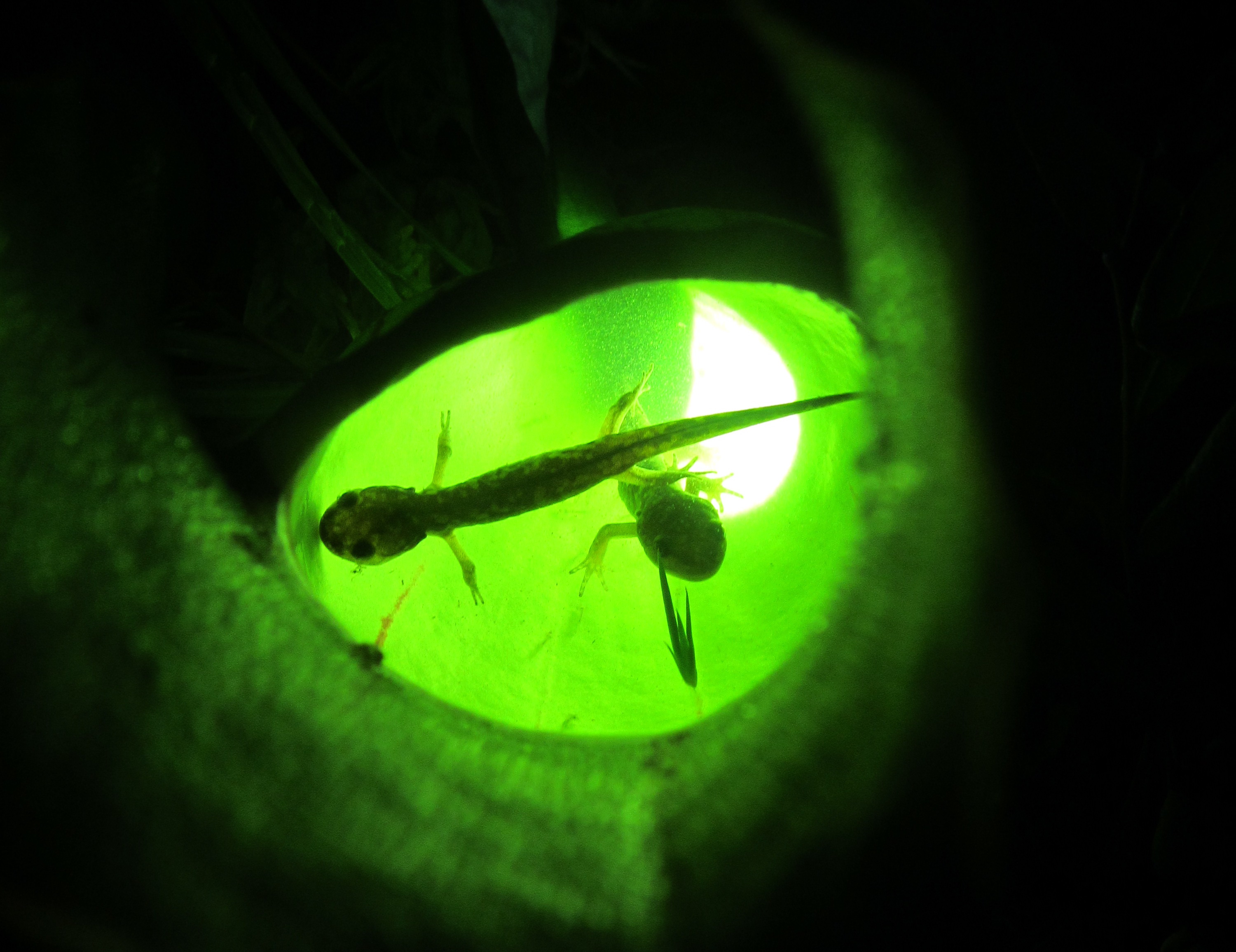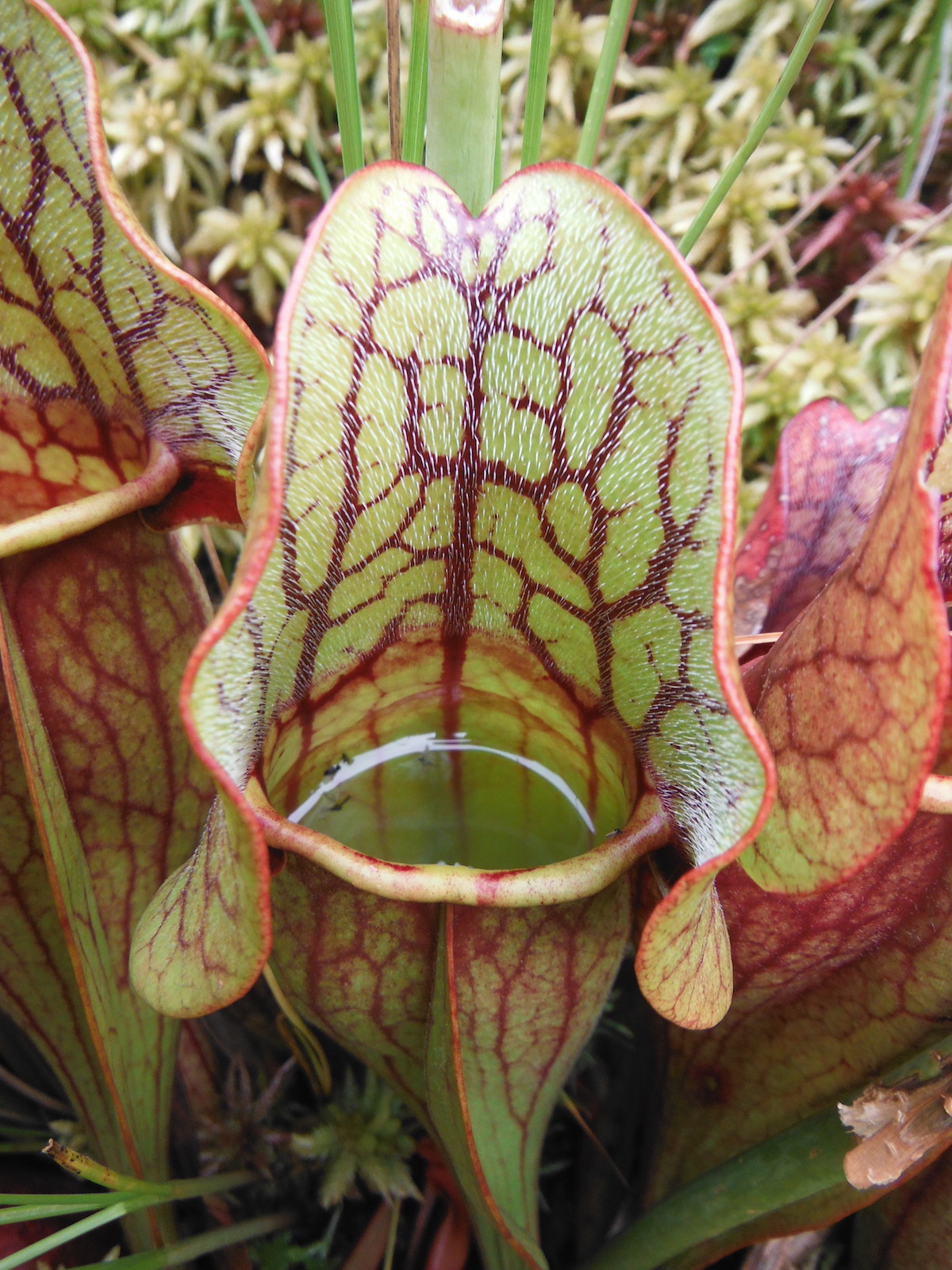The Carnivorous Plant Named 'Turtle Socks' Has Been Eating Baby Salamanders for Lunch

In the bogs of Ontario, Canada, certain plants have developed a taste for amphibians.
The northern pitcher plant (Sarracenia purpurea) is a type of carnivorous flora well-known for chowing down on hundreds of different species of insects. Now, according to a study published June 5 in the journal Ecology, scientists have found that about 1 in 5 pitcher plants in Ontario's Algonquin Provincial Park have also made a habit of capturing, killing and digesting juvenile salamanders, too.
According to the study authors, this is the first research showing that carnivorous pitcher plants, also known as turtle socks, make vertebrates a regular part of their diets. [Image Gallery: Carnivorous Plants in Action]
"This crazy discovery of previously unknown carnivory of a plant upon a vertebrate happened in a relatively well-studied area on relatively well-studied plants and animals," study co-author Alex Smith, an associate biology professor at Ontario's University of Guelph, told Live Science in an email. "I hope and imagine that one day the general public's interpretive pamphlet for the bog will say, 'Stay on the boardwalk and watch your children — here be plants that eat vertebrates!"

With goblet-shaped leaves, pitcher plants collect rainwater to attract and trap various insects and invertebrates. Once caught in the pitcher, hapless bugs are slowly dissolved by a mixture of microorganisms in the water and digestive enzymes produced by the plant. The bug dies, and their carnivorous captor gets a free nutritional supplement.
Smith and his colleagues at the Universities of Guelph and Toronto first discovered salamanders — both living and dead — floating inside these pitchers during several sessions of field work at Algonquin Provincial Park in 2017 and 2018.
"I turned up several pitcher plants to show the students and in one plant found a juvenile salamander," Smith told Live Science. "Well, that's a surprise, I said. (What I muttered was actually more like WTF)."
Sign up for the Live Science daily newsletter now
Get the world’s most fascinating discoveries delivered straight to your inbox.
In four separate surveys, the researchers sampled the contents of several hundred pitcher plants in a small section of the park's wetlands. They investigated in late summer, when young salamanders tend to metamorphose, leaving the comfort of their native lakes to venture onto dry land for the first time. The researchers found that roughly 20% of the surveyed plants contained at least one salamander, living or dead, and that numerous pitchers had captured more than one salamander at a time.
Once trapped in a pitcher, the salamanders survived from anywhere between three and 19 days before their watery jails became watery graves; some salamanders drowned, others starved and others still cooked to death in the hot, acidic pitcher water (pitcher fluid has a pH of less than 4, making it about as acidic as orange juice). Once dead, salamanders appeared to decompose in 10 days or less.
Overall, this high frequency of capture suggests that salamanders might be "a substantial nutrient source for pitcher plants," the authors wrote. On the flip side, pitcher plants appear to represent a substantial existential threat for young salamanders, with as many as 5% of the bog's juvenile salamander population falling prey to their leafy neighbors in a given year.
Why do so many young salamanders end up as plant food? It's possible that the unseasoned amphibians treat the pitchers as a sort of watery refuge from perceived threats during their first excursions out of the lake and onto the land, the authors wrote — or, perhaps they're simply drawn to the many species of insects that flock to pitcher plants for a few sips of sweet nectar.
In any case, the carnivorous plants appear to be far more carnivorous than previously thought. Here be monsters.
- Naughty by Nature: The Most Disgusting and Deadly Flowers
- In Photos: Lost Salamanders Discovered
- Image Gallery: Carnivorous Plants
Originally published on Live Science.

Brandon is the space/physics editor at Live Science. His writing has appeared in The Washington Post, Reader's Digest, CBS.com, the Richard Dawkins Foundation website and other outlets. He holds a bachelor's degree in creative writing from the University of Arizona, with minors in journalism and media arts. He enjoys writing most about space, geoscience and the mysteries of the universe.










